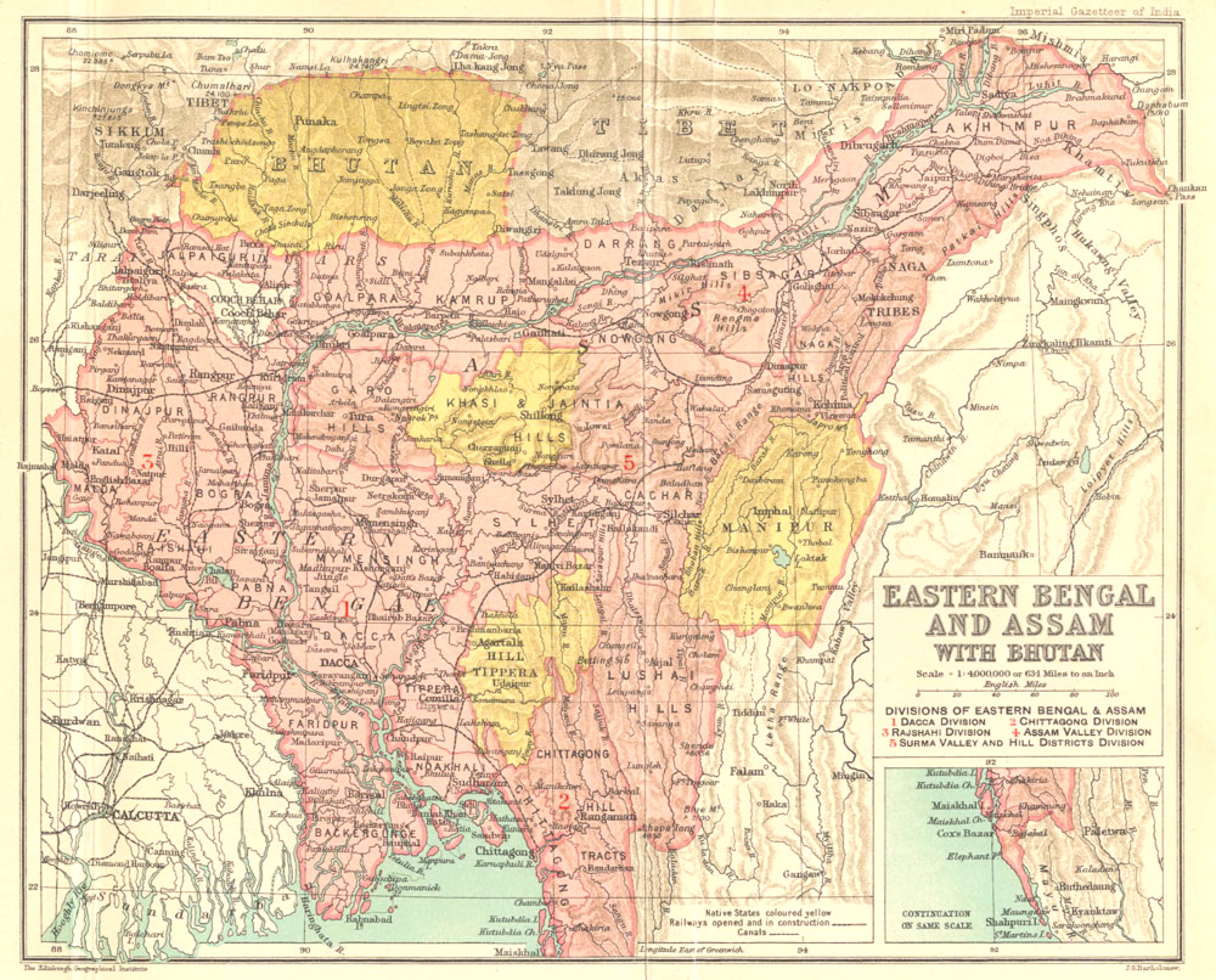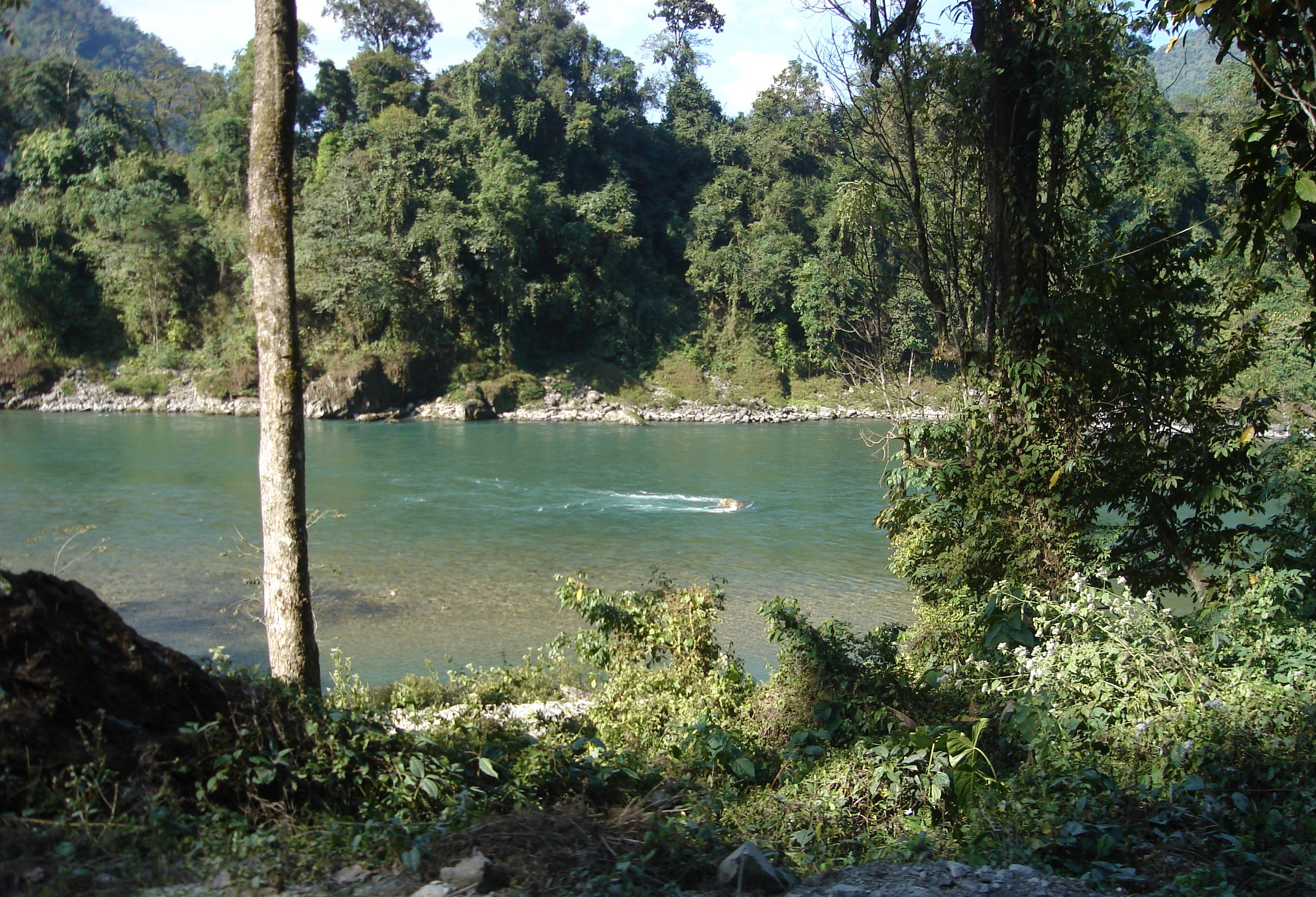|
Aie River
The Aie River is a tributary of the Manas River in the Indian state of Assam. The river originates from Black Mountains (Bhutan). The Aie river flows through the Chirang district of Assam and joins Manas river at Bangpari of Chirang district. ''Aie'' means ''mother'' in Assamese language. The Dwijing Festival is an annual festival set on the banks of Aie river near the Hagrama bridge of Chirang district Chirang District is an administrative district in the Bodoland Territorial Region of Assam state in the North-East of India. History It is a relatively new district in the Bodoland Territorial Region of Assam. Chirang district has been carv ... which is a colorful celebration of Assam's culture. References Rivers of Assam Rivers of India {{India-river-stub ... [...More Info...] [...Related Items...] OR: [Wikipedia] [Google] [Baidu] |
Assam
Assam (; ) is a state in northeastern India, south of the eastern Himalayas along the Brahmaputra and Barak River valleys. Assam covers an area of . The state is bordered by Bhutan and Arunachal Pradesh to the north; Nagaland and Manipur to the east; Meghalaya, Tripura, Mizoram and Bangladesh to the south; and West Bengal to the west via the Siliguri Corridor, a wide strip of land that connects the state to the rest of India. Assamese language, Assamese and Boro language (India), Boro are the official languages of Assam, while Bengali language, Bengali is an additional official language in the Barak Valley. Assam is known for Assam tea and Assam silk. The state was the first site for Oil well, oil drilling in Asia. Assam is home to the one-horned Indian rhinoceros, along with the wild water buffalo, pygmy hog, tiger and various species of Asiatic birds, and provides one of the last wild habitats for the Asian elephant. The Economy of Assam, Assamese economy is aided by w ... [...More Info...] [...Related Items...] OR: [Wikipedia] [Google] [Baidu] |
Chirang District
Chirang District is an administrative district in the Bodoland Territorial Region of Assam state in the North-East of India. History It is a relatively new district in the Bodoland Territorial Region of Assam. Chirang district has been carved out from Bongaigaon district in 2004. The word "Chirang" has derived from Garo word - "Chi" means Water and "Rang" means Rain. It may also be a copy of Tsirang District of neighbouring Bhutan. On the other hand, most of the people regarded the word Chirang is derived from the Bodo word Chirang or Sirang. Si means life and Rang means Money. Sirang was an area which is covered by valuable soil, plants, trees, flora and fauna or the things which are necessary for human life. Thus, it is a place which is important for human life or the place which is just like money or valuable for life and is later come to know Si + Rang = Sirang. After some time, the word articulated to Chirang from Sirang. And thus, the word Sirang is latter known as C ... [...More Info...] [...Related Items...] OR: [Wikipedia] [Google] [Baidu] |
Black Mountains (Bhutan)
The Black Mountains is a mountain range in central Bhutan, and is a sub−range of the Himalayan Range System. Locally the mountain range is known as Dungshing Gang which means the peaks of fir. Geography Durshingla peak, at an elevation of , is the range's highest point. National Park Jigme Singye Wangchuck National Park Jigme Singye Wangchuck National Park (formerly Black Mountains National Park) covers an area of in central Bhutan. It protects a large area of the Black Mountains, a sub−range of the Himalayan Range System. The park occupies most of the Tro ... protects a large area of the Black Mountains and the Eastern Himalayan broadleaf forests ecoregion within them. It was originally named Black Mountains National Park. Alpine lakes The black mountains range is home to some of the beautiful alpine lakes which are the source of some rivers. The lakes are: *Gesatsho *Tshonamtsho *Broksatsho *Mendatsho *Peptatsho *Bekhotsho *Tshobobzhao *Sertsho *Yutsho Socio-cultura ... [...More Info...] [...Related Items...] OR: [Wikipedia] [Google] [Baidu] |
Bhutan
Bhutan (; dz, འབྲུག་ཡུལ་, Druk Yul ), officially the Kingdom of Bhutan,), is a landlocked country in South Asia. It is situated in the Eastern Himalayas, between China in the north and India in the south. A mountainous country, Bhutan is known as "Druk Yul," or "Land of the Thunder Dragon". Nepal and Bangladesh are located near Bhutan but do not share a land border. The country has a population of over 727,145 and territory of and ranks 133rd in terms of land area and 160th in population. Bhutan is a Constitutional Democratic Monarchy with King as head of state and Prime Minister as head of government. Mahayana and Vajrayana Buddhism is the state religion and the Je Khenpo is the head of state religion. The subalpine Himalayan mountains in the north rise from the country's lush subtropical plains in the south. In the Bhutanese Himalayas, there are peaks higher than above sea level. Gangkhar Puensum is Bhutan's highest peak and is the high ... [...More Info...] [...Related Items...] OR: [Wikipedia] [Google] [Baidu] |
Manas River
The Manas River (Pron: ˈmʌnəs; in Bhutan Drangme Chhu) is a transboundary river in the Himalayan foothills between southern Bhutan and India. It is the largest river system of Bhutan, among its four major river systems; the other three are Amo Chu or Torsa river, Wong Chu or Raidak, Puna Tshang Chu or Sankosh. It is met by three other major streams before it again debouches into India in western Assam. The total length of the river is , flows through Tibet, China for , flows in Bhutan for and then flows through Assam for before it joins the mighty Brahmaputra River at Jogighopa. Another major tributary of the Manas, the Aie River joins it in Assam at Bangpari. The river valley has two major reserve forest areas, namely the Royal Manas National Park (, established in 1966) in Bhutan and the contiguous Manas Wildlife Sanctuary ( in 1955 increased to in December 1985) encompassing Project Tiger reserve, an elephant reserve and a biosphere reserve, which constitutes a UNESC ... [...More Info...] [...Related Items...] OR: [Wikipedia] [Google] [Baidu] |
Chirang District
Chirang District is an administrative district in the Bodoland Territorial Region of Assam state in the North-East of India. History It is a relatively new district in the Bodoland Territorial Region of Assam. Chirang district has been carved out from Bongaigaon district in 2004. The word "Chirang" has derived from Garo word - "Chi" means Water and "Rang" means Rain. It may also be a copy of Tsirang District of neighbouring Bhutan. On the other hand, most of the people regarded the word Chirang is derived from the Bodo word Chirang or Sirang. Si means life and Rang means Money. Sirang was an area which is covered by valuable soil, plants, trees, flora and fauna or the things which are necessary for human life. Thus, it is a place which is important for human life or the place which is just like money or valuable for life and is later come to know Si + Rang = Sirang. After some time, the word articulated to Chirang from Sirang. And thus, the word Sirang is latter known as C ... [...More Info...] [...Related Items...] OR: [Wikipedia] [Google] [Baidu] |
Tributary
A tributary, or affluent, is a stream or river that flows into a larger stream or main stem (or parent) river or a lake. A tributary does not flow directly into a sea or ocean. Tributaries and the main stem river drain the surrounding drainage basin of its surface water and groundwater, leading the water out into an ocean. The Irtysh is a chief tributary of the Ob river and is also the longest tributary river in the world with a length of . The Madeira River is the largest tributary river by volume in the world with an average discharge of . A confluence, where two or more bodies of water meet, usually refers to the joining of tributaries. The opposite to a tributary is a distributary, a river or stream that branches off from and flows away from the main stream. PhysicalGeography.net, Michael Pidwirny ... [...More Info...] [...Related Items...] OR: [Wikipedia] [Google] [Baidu] |
Assamese Language
Assamese (), also Asamiya ( ), is an Indo-Aryan language spoken mainly in the north-east Indian state of Assam, where it is an official language, and it serves as a ''lingua franca'' of the wider region. The easternmost Indo-Iranian language, it has over 23 million speakers. Nefamese, an Assamese-based pidgin, is used in Arunachal Pradesh, and Nagamese, an Assamese-based Creole language, is widely used in Nagaland. The Kamtapuri language of Rangpur division of Bangladesh and the Cooch Behar and Jalpaiguri districts of India are linguistically closer to Assamese, though the speakers identify with the Bengali culture and the literary language. In the past, it was the court language of the Ahom kingdom from the 17th century. Along with other Eastern Indo-Aryan languages, Assamese evolved at least before the 7th century CE from the middle Indo-Aryan Magadhi Prakrit. Its sister languages include Angika, Bengali, Bishnupriya Manipuri, Chakma, Chittagonian, Hajong, ... [...More Info...] [...Related Items...] OR: [Wikipedia] [Google] [Baidu] |
Culture Of Assam
The culture of Assam is traditionally a hybrid one, developed due to cultural assimilation of different ethno-cultural groups under various political-economic systems in different periods of its history. Historical perspective The roots of culture in Assam goes back almost five thousand years when the first wave of humans, the Austroasiatic people reached the Brahmaputra valley. They mixed with the later immigrant Tibeto-Burman and the Indo-Aryan peoples in prehistoric times. The last wave of migration was that of the Tai/Shan who later formed the idea of Assamese culture and its identity. The Ahoms, later on, brought some more Indo-Aryans like the Assamese Brahmins and Ganaks and Assamese Kayasthas to Assam. According to the epic ''Mahabharata'' and on the basis of local folklore, people of Assam (Kiratas) probably lived in a strong kingdom under the Himalayas in the era before Jesus Christ, which led to early assimilation of various Tibeto-Burman and Autro-Asiatic e ... [...More Info...] [...Related Items...] OR: [Wikipedia] [Google] [Baidu] |
Rivers Of Assam
A river is a natural flowing watercourse, usually freshwater, flowing towards an ocean, sea, lake or another river. In some cases, a river flows into the ground and becomes dry at the end of its course without reaching another body of water. Small rivers can be referred to using names such as creek, brook, rivulet, and rill. There are no official definitions for the generic term river as applied to geographic features, although in some countries or communities a stream is defined by its size. Many names for small rivers are specific to geographic location; examples are "run" in some parts of the United States, "burn" in Scotland and northeast England, and "beck" in northern England. Sometimes a river is defined as being larger than a creek, but not always: the language is vague. Rivers are part of the water cycle. Water generally collects in a river from precipitation through a drainage basin from surface runoff and other sources such as groundwater recharge, springs, ... [...More Info...] [...Related Items...] OR: [Wikipedia] [Google] [Baidu] |




